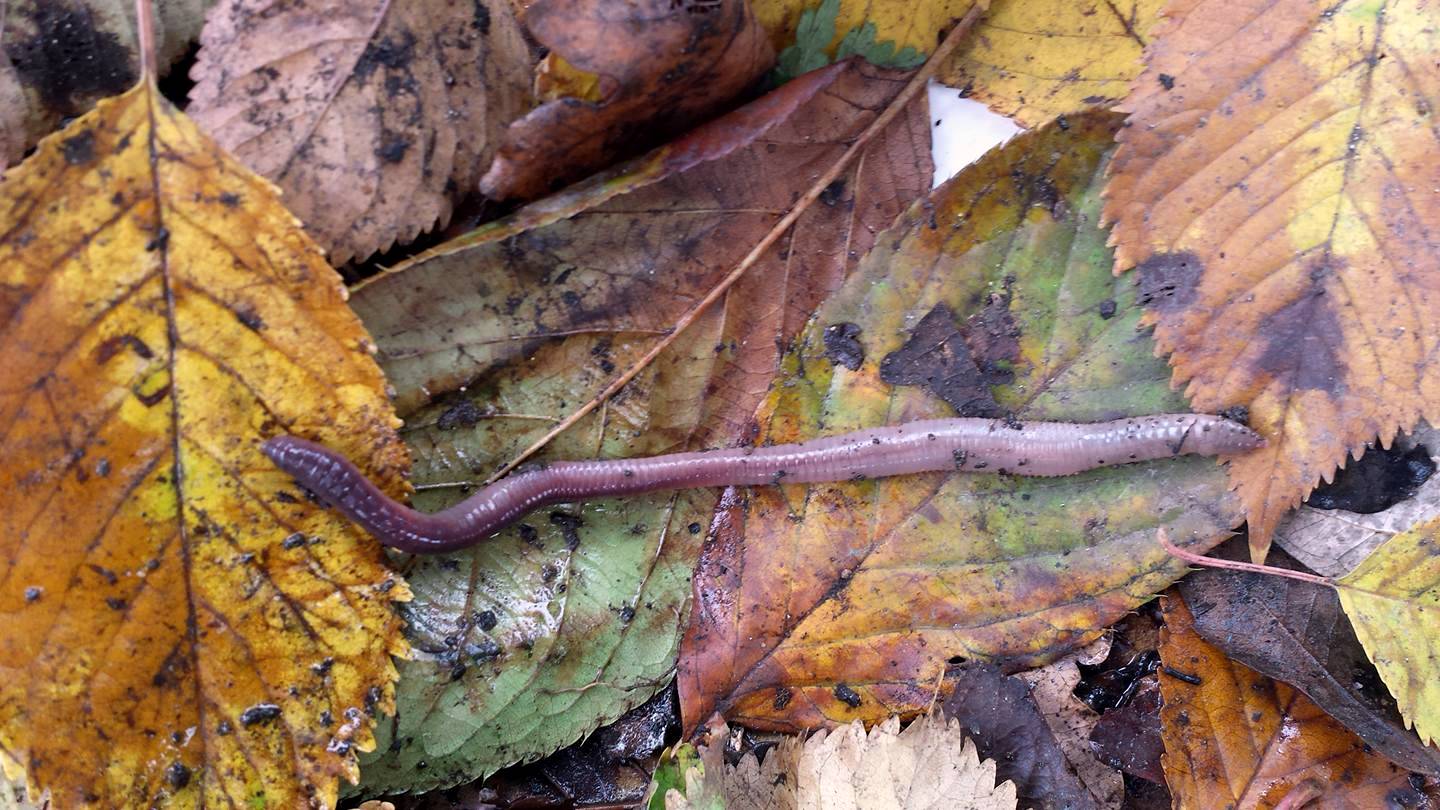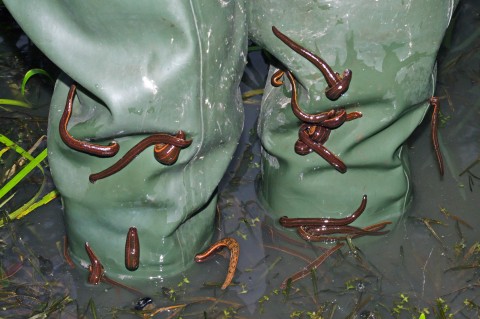By taking part in Earthworm Watch in your garden, allotment or other green space near you, the team hope you’ve had the opportunity to record your observations of surface, soil and deep-living earthworms. You can find out more about these earthworm eco-types (which refers to their feeding habits and where they live within the soil) by visiting the science section of our website. You may not find all of these earthworm types the first time, but by repeating the survey more than once, in different habitats within your garden or green space or a suitable new location, we hope you will get a sense of the diversity of earthworms that spend their lives on the surface and beneath the soil.
Earthworms, like human beings have a brain, a nervous system, heart and a digestive system, as well as carrying blood around their bodies. Naturalist Charles Darwin famously studied earthworms for over 30 years and made some interesting observations about their senses. Darwin wanted to understand if earthworms could see and hear and understand earthworm movements. Darwin’s observations eventually became one of his best-selling books called ‘The formation of vegetable mould, through the action of worms’ published in 1881 which sold more copies than his book on Evolution, ‘The Origin of Species’.
Darwin carefully testing the behaviour and brainpower of earthworms many times through many experiments at Down House in Kent (where he spent his years following his return from his Beagle Voyage) whilst also building up evidence to support his ‘Origin of Species’ theory. He corresponding with many different scientists and individuals and will be discussed in more detail in future blogs. Through Darwin’s early insights and scientists since, we understand in great detail how the senses of earthworms have enabled them to live within and on the soil surface and become highly successful in doing so.
How do earthworms move?
Earthworms have two sets of circular and longitudinal muscles (musurca) for moving above and below the soil. These run the whole length of their bodies and allow them to expand and contract in response to their environment. Earthworm's bodies are covered in hairs (setae) that grip the soil and through muscle action allow them to move through their burrows, to feed on the soil and other activities such as creating worm casts from ingested soil up onto the soil surface.
Can earthworms see and hear?
Earthworms do not possess eyes like humans and other complex animals; instead they have light receptors that detect when it is light or dark. Being able to detect light and dark may be beneficial to avoid predators and know when it is safe to search for food and to avoid drying out in sunlight. Earthworms have no ears, but can sense vibrations. Vibrations can be made by the sounds of animals nearby causing vibrations within or on the soil surface. Moles for instance are known to create vibrations which can lead earthworms to try and avoid them by migrating to the soil surface. Meanwhile birds such as herring gulls are regularly observed tapping the earth with their feet to generate vibrations to bring earthworms to the surface and are then subsequently eaten.
Can earthworms touch & taste?
Earthworms have a simple brain that connects with nerves from their skin and muscles. The nerves detect light, vibrations and even some tastes. The earthworm's body is covered with chemoreceptors. These are cells that allow the earthworm to taste things and are tiny sense organs which detect chemicals in the soil. The muscles make movements in response to touch and taste.
How do earthworms breath?
Earthworms breathe oxygen and carbon dioxide is released, just like humans, but they don't have lungs. They can't breathe through their mouth, and certainly can't breathe through their nose because they don't have one! They instead breathe through their skin. Air dissolves on the mucus of their skin, so they must stay moist to breathe. If worms dry out, they suffocate.





